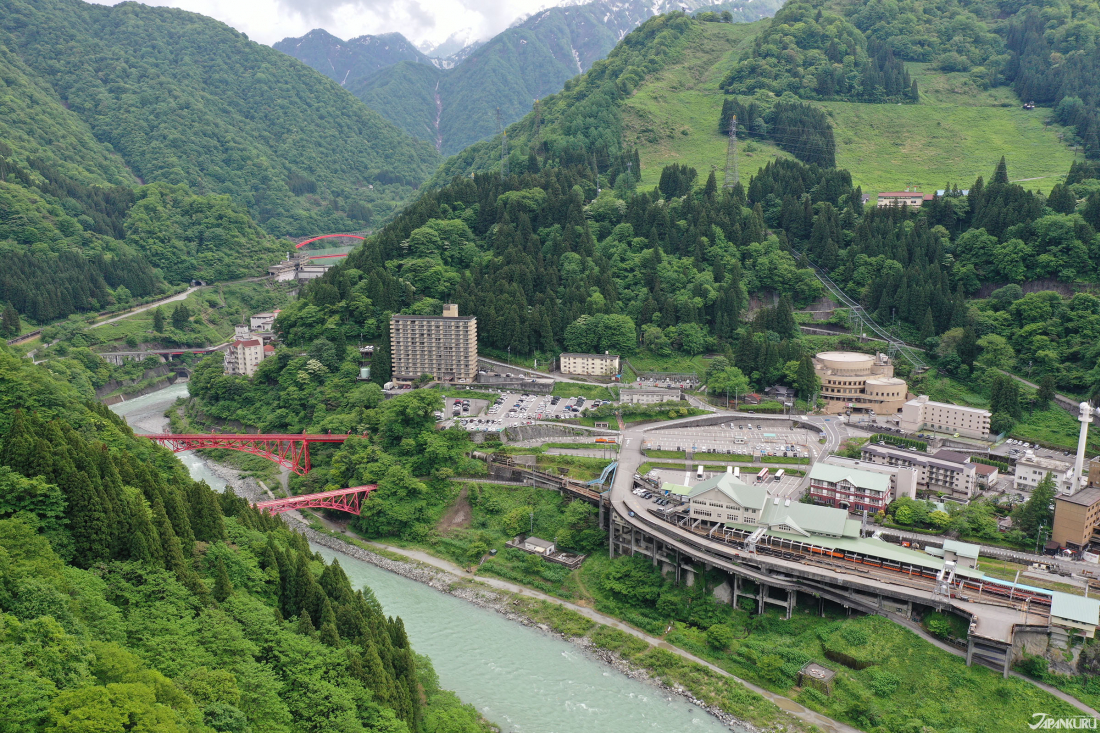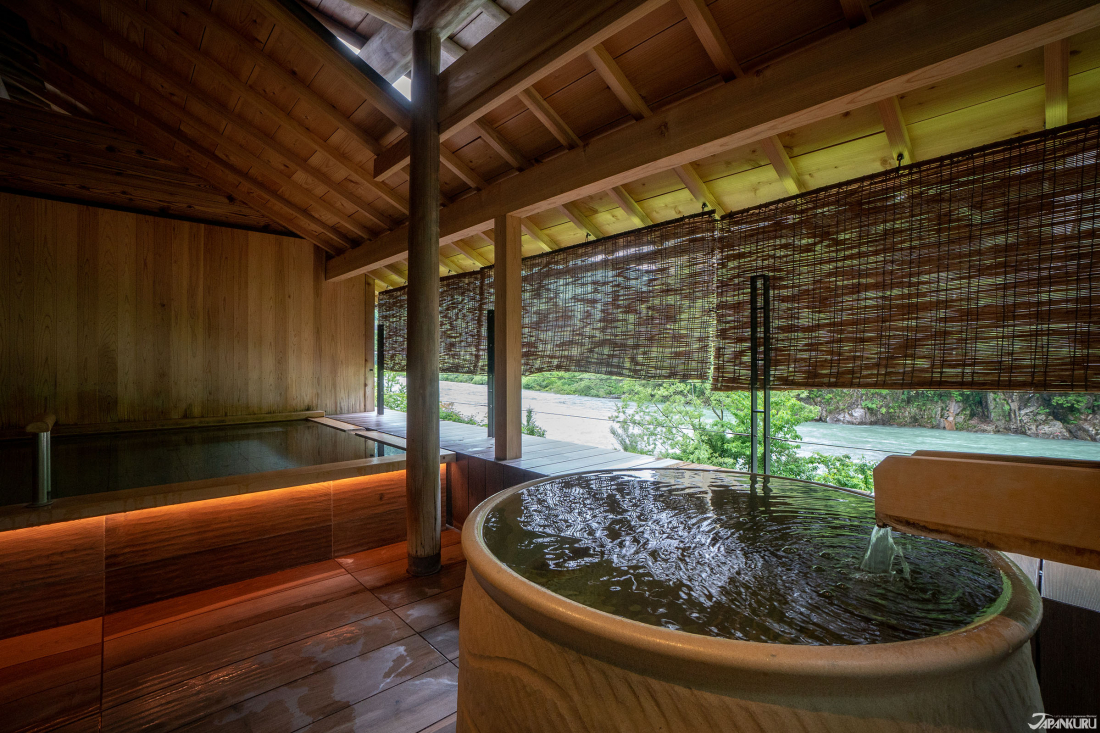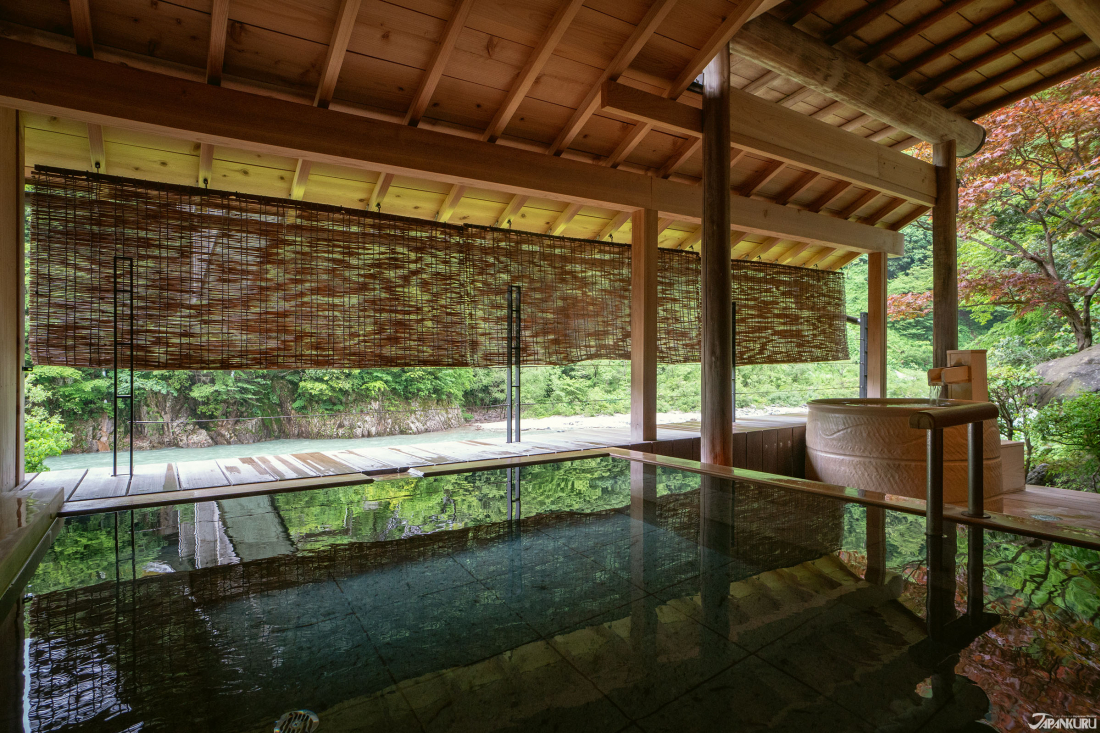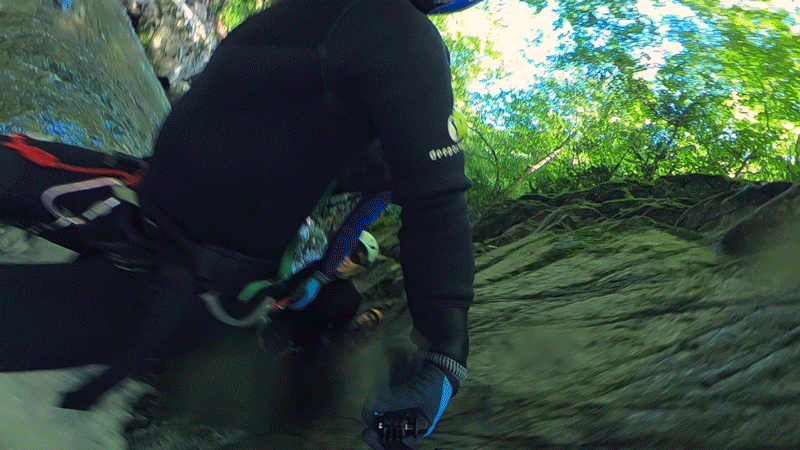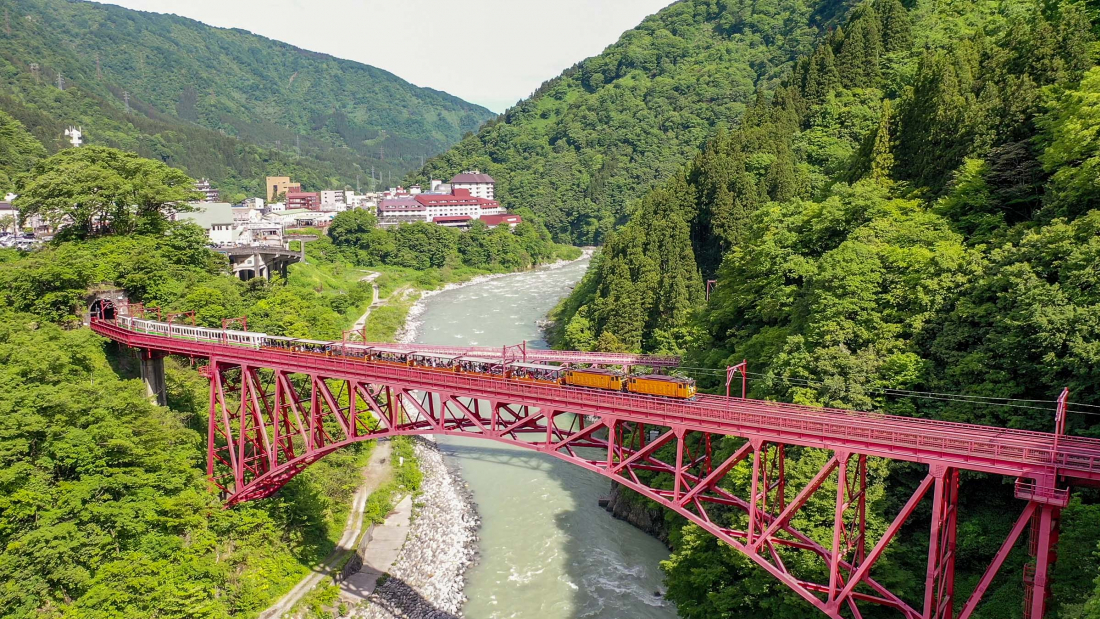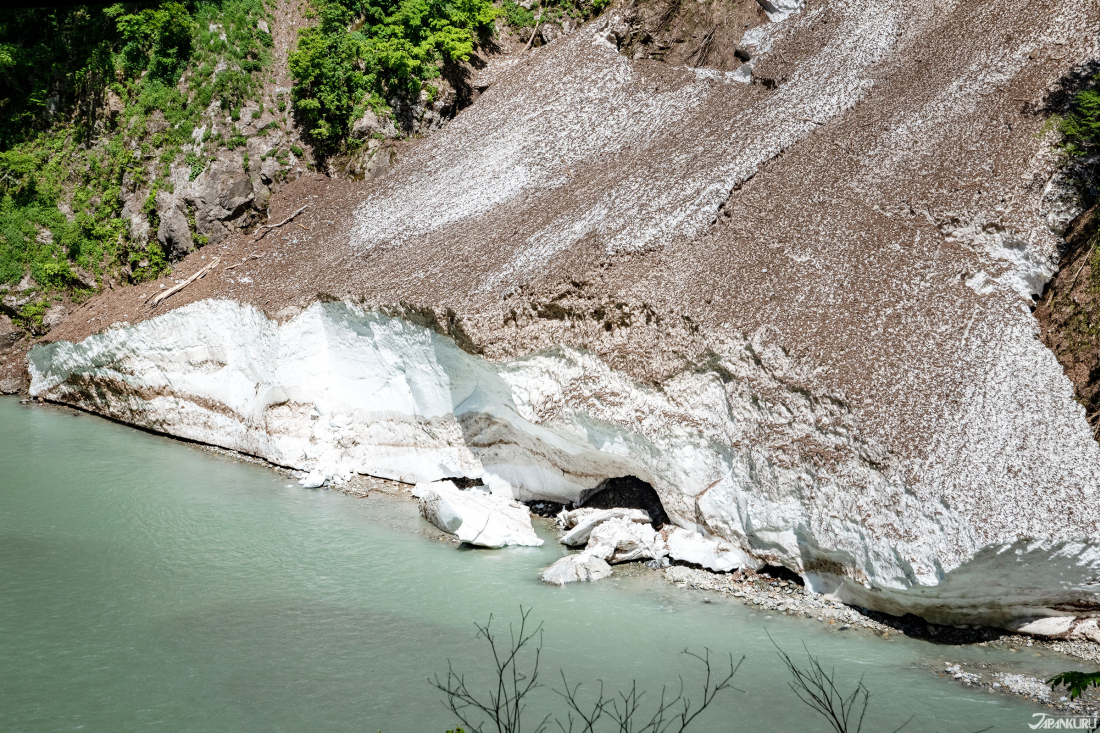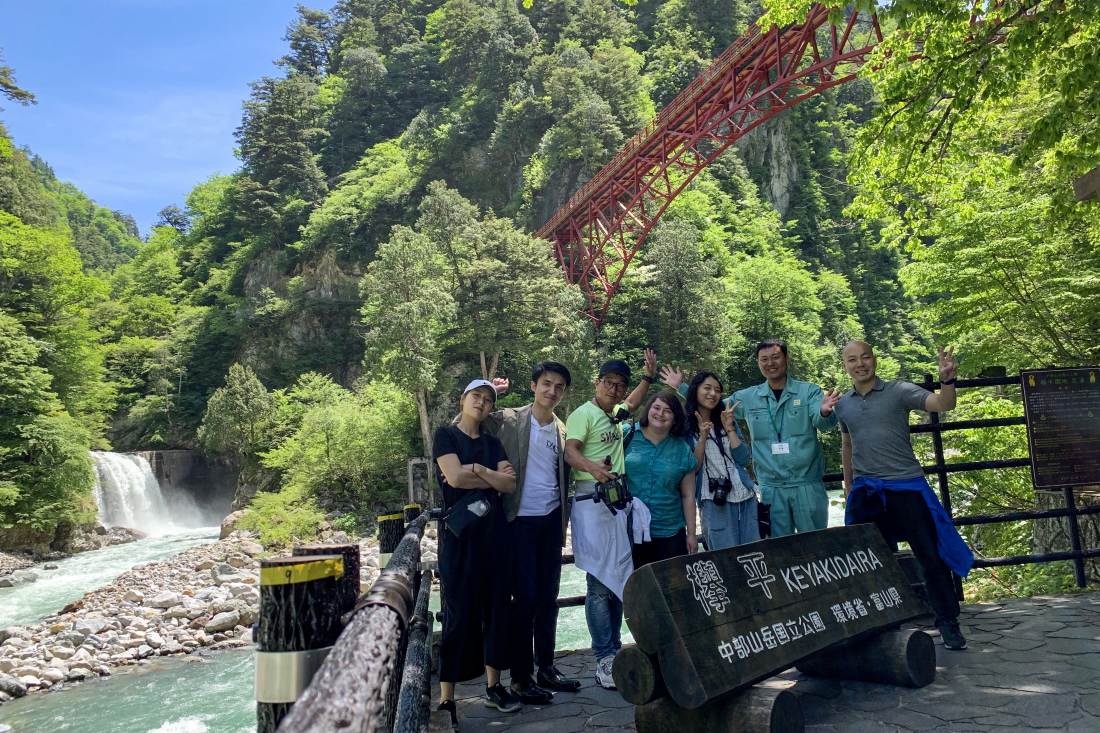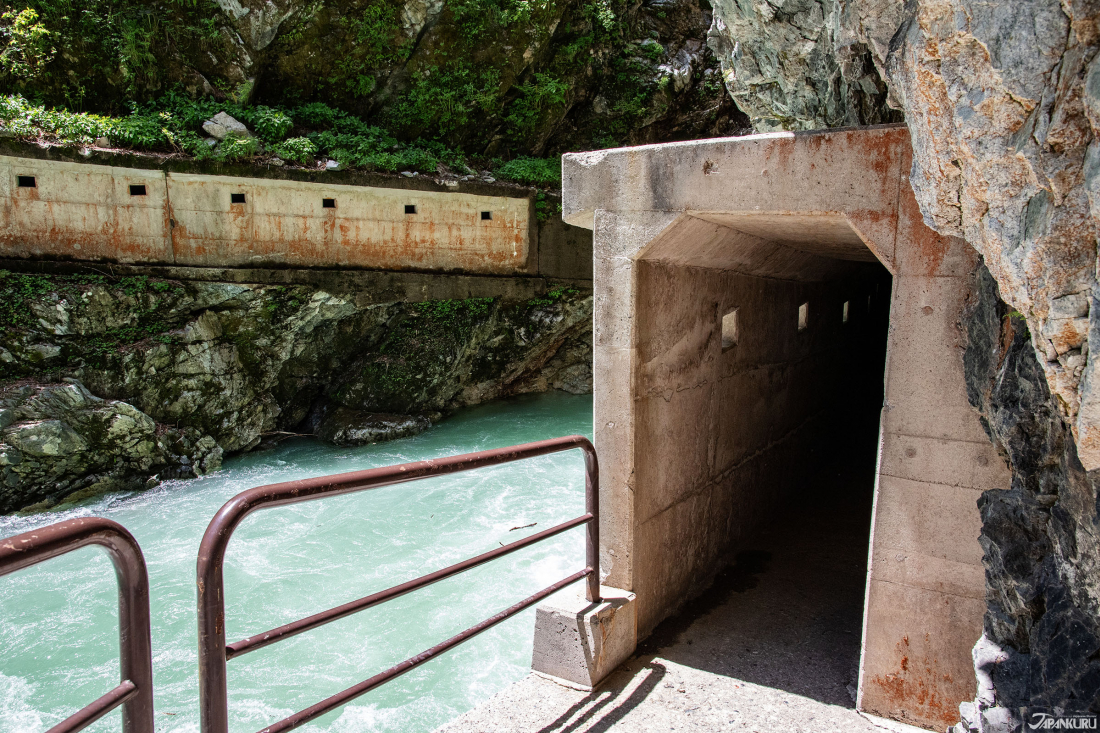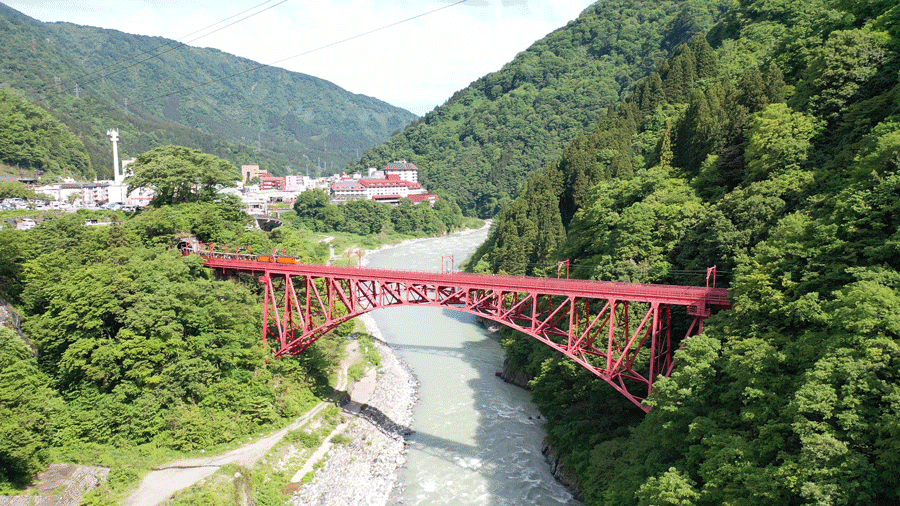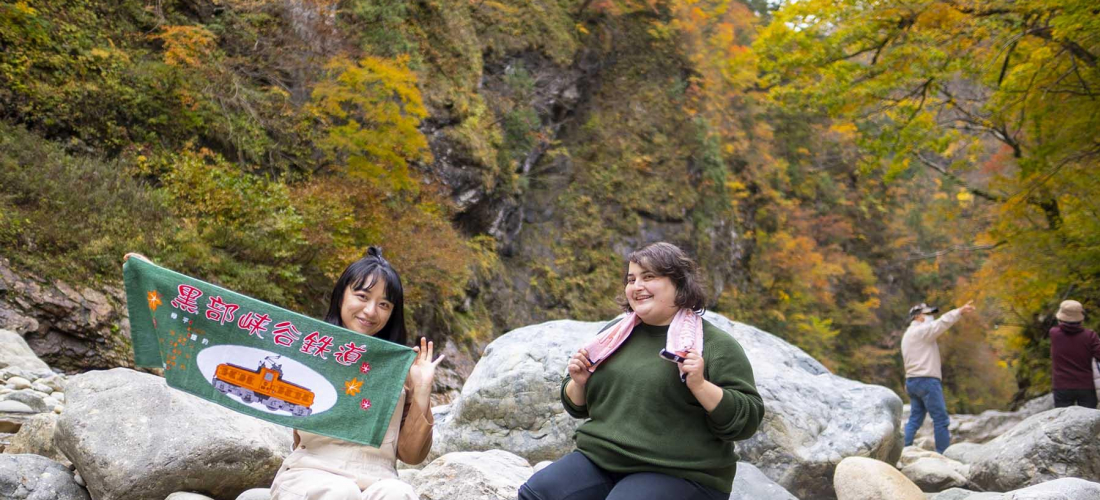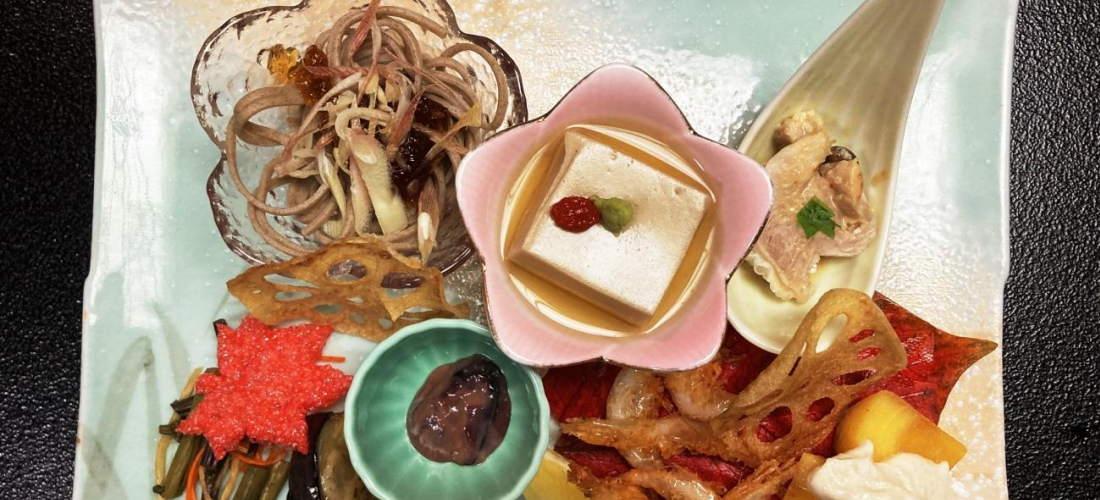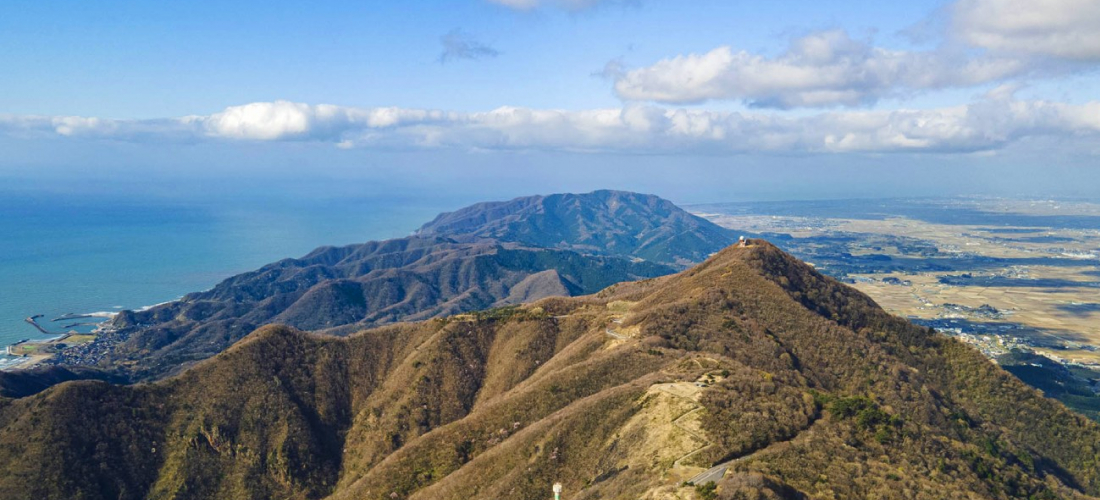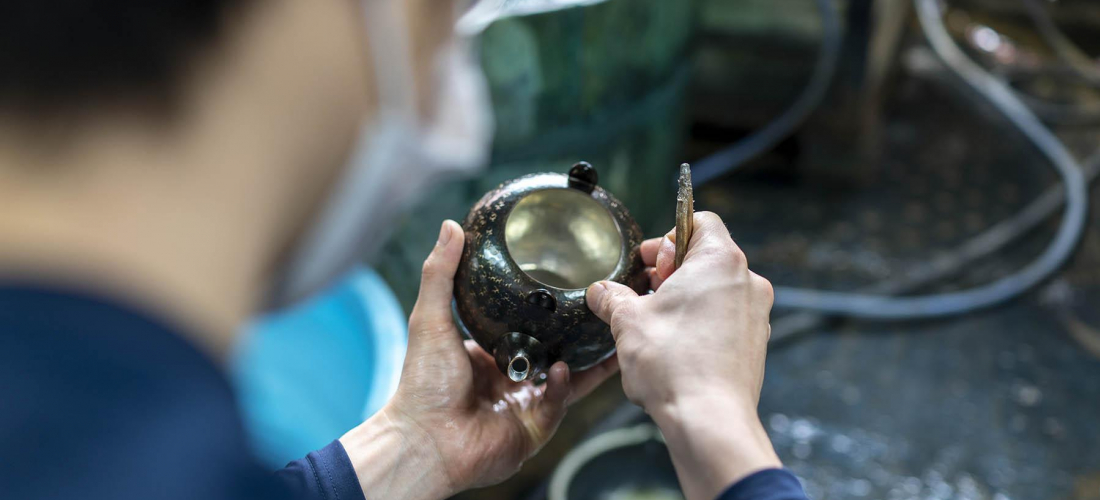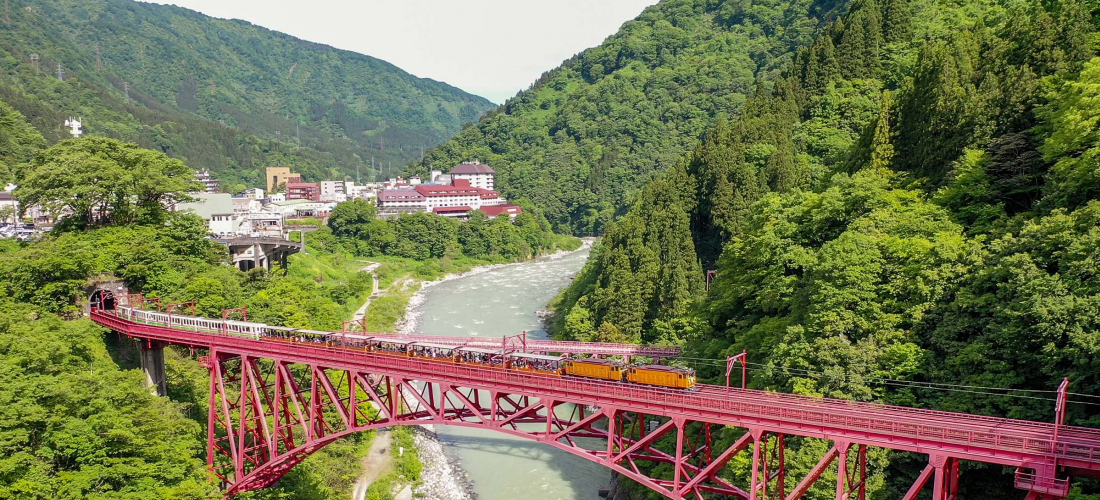
CONTENTS
Toyama Prefecture might be known among international travelers for its impressive walls of snow found in the “Snow Corridor,” but tucked just a few miles away are many more hidden gems in the surrounding area. The nearby bay provides fresh seafood Toyama is known for, and the Unazuki Onsen area inside the Kurobe River Valley is full of gorges, perfect in the summer for active adventures like rafting and canyoning. “Onsen” means hot spring in Japanese, and Unazuki Onsen is of course dotted with its namesake, full of luxe hot springs. After testing your endurance in the river rapids, Kurobe offers the chance to take a reviving soak, admire the scenery on the Torokko Train, and then sample all of the local specialty cuisine, before drifting off to the sounds of the mountains.
Born between the sea and the mountains, read on to find out about all Kurobe has to offer!
The Kurobe Gorge, One of Japan’s Most Impressive Gorges
Kurobe City (黒部市) has found a little fame from the high walls of snow popular with visitors looking for some good instagram shots, but travelers who admire the snow and then get out of town don't even know what they're missing.
Toyama is in the Chubu Region of Japan, in the central part of Japan's main island of Honshu, with the western border taken up by the coast of the Sea of Japan. We can thank the sea, and especially Toyama Bay, for the abundant fresh seafood found around the prefecture! But the Unazuki Onsen area also provides Kurobe with gloriously steamy hot springs, bursting forth from the mountain crags. All this geological variation makes for deep ravines, and the rivers running through those are a great place to try canyoning. Take the Kurobe Gorge Railway's Torokko Train around the area to explore, and we're pretty sure you'll be pleasantly surprised by how much fun this unassuming region can be.
How to Get to Kurobe’s Unazuki Onsen Area
The easiest way to get to Kurobe is probably via shinkansen (a.k.a. bullet train). If you're already at the Toyama airport, or somewhere else nearby, you can look into local trains and buses, but using the Hokuriku Shinkansen line most of the way will get you there in no time.
Taking the Hokuriku Shinkansen Line
To:
Kurobe-Unazuki Onsen Station (黒部宇奈月温泉駅)
From:
Tokyo Station (東京駅) – 2 hours 20 minutes, 11,860 yen
Kanazawa Station (金沢駅) – 35 minutes, 4,020 yen
Toyama Station (富山駅) – 12 minutes, 2,940 yen
From the shinkansen station you have to take one more train ride to get to Unazuki Onsen proper. Cross the street to get to Shin-Kurobe Station on the Toyama Chihou Railway line, and take that for another 30 minutes or so (round trip discount ticket: 1,100 yen). The way over is quite picturesque, including the retro train itself, so enjoy the ride! You’ll eventually want to get off at Unazukionsen Station.
(Note: it’s a bit confusing, but the shinkansen station where you transfer is “Kurobe-Unazuki Onsen Station”, and your final destination is just “Unazukionsen Station”.)
From Toyama International Airport, the easiest route is just to take the airport bus to Toyama Station, and then go the shinkansen route from there. The whole trip should cost you about 3,370 yen, although all of these prices are subject to change.
To Truly Enjoy the Village of Unazuki Onsen, Go for a Ryokan
When you're spending time in a little Japanese town like this, it's the perfect opportunity to stay at a local ryokan-style traditional hotel. Ryokan are set up to help you make the most of the nearby hot springs, local gourmet specialties, and beautiful views!
During our visit, we lived it up by staying the night at Togen Ryokan, a ryokan set up for convenient access when touring Unazuki Onsen. Not wanting to waste any chances to enjoy Kurobe to the fullest, we took advantage of the private open-air baths available for rent, and the premium kaiseki ryori multi-course meals on offer. It was lots of fun getting to try all the local specialties in Toyama; we whole-heartedly recommend it.
If you'd like to see for yourself what Togen Ryokan is like, they have a variety of rooms available. Some come with standard beds, and others are like this Japanese-style tatami room, made for families or groups, with lots of places to sit and a great view of the river. If you're still doubting the comfort of these rooms, just know that most have fragrant tatami floors, 70% of them come equipped with state-of-the-art massage chairs, and all of them have yukata available in a few different sizes, for relaxing in around the hotel. We were certainly pretty comfortable!
Unazuki Onsen Togen Ryokan
Address: 22-1 Unazuki Onsen, Kurobe City, Toyama
Phone: 81-765-62-1131
Check-in/Check-out: 15:00/10:00
Official Website (en)
Enjoy your own private hot spring bath!
Ryokans often offer what are called “kashikiri onsen” (貸切温泉), literally hot springs for rent, where you can lounge in the luxurious hot water away from the rest of the guests. If bathing with strangers still makes you nervous (although you really shouldn't worry about it in Japan), or you just want to spend some nice one-on-one time with a special someone, make sure you reserve your time slot for the kashikiri onsen as soon as possible. They're also a good option for those of us with very obvious and hard-to-conceal tattoos, since tattoos are often frowned upon (or even banned) at Japanese onsen.
Togen Ryokan has three of these private baths available to rent, all for no additional charge. The water here is mildly alkaline, which they say makes for beautiful skin post-bath! Just call the front desk to check availability, then pick up the keys and enjoy your soak.
(Available 15:00 – 22:00/7:00 – 10:00, 40 minutes at a time.)
Enjoy… the public bath!
Indulge in a kaiseki multi-course meal.
See the Sights of Kurobe!
Rich in clear water, fresh mountain air, and all the scenic geography to go with them, what’s the best way to explore all that Kurobe has to offer? Let us fill you in on how to check it all out.
Sightseeing in Kurobe: ① Canyoning!
Blessed with deep canyons and hearty rivers, Kurobe has the perfect conditions for pushing yourself to the limits. Our recommendation? Canyoning. It's an exhilarating way to explore the natural landscape.
Canyoning is something of an extreme sport, so you have to be accompanied by an expert. Canyoning tours are offered locally by J-WET Adventures, where the pros will coach you through the experience and make sure everyone has a good time. When you're not entirely confident in your abilities, they'll lend a helping hand and keep you safe! Read on to find out how to go canyoning yourself.
(Available from early June through to the end of October.)
1. Choose a tour course. (Find your options here.)
– 3 Hour Course: 13+ y.o., 10,000 yen per person.
– 6 Hour Course: 20+ y.o., 15,000 yen per person.
2. Book your tour online, or over the phone.
– From the homepage, email them with your details.
– Make phone reservations in English or Japanese.
3. Confirm your reservation completion by e-mail.
4. Meet your J-WET Adventures guides at Nakajima Ski Center.
– If you’re staying within a five or ten minute drive, they offer a shuttle service. Just ask!
5. Pay for your tour, get ready to go canyoning, and then go for it!
– Don’t forget to bring your bathing suit or clothes you don’t mind soaking through, along with a towel, and anything else they recommend.
– If you use contacts, make sure to bring a pair of goggles.
Sightseeing in Kurobe: ② Unazuki Dam
With so much water rushing along the Kurobe River, the dam was built as a hydroelectric power plant, to take advantage of the river’s energy. Unazuki Dam took years to build, and after a while the construction workers started to settle down nearby, breathing life into the Unazuki Onsen area. You could say that the town is now there thanks to the dam!
Sightseeing in Kurobe: ③ Kurobe Gorge Railway’s Torokko Train
When admiring the scenic views of Kurobe, you can't miss the local Torokko Train. It gives you access to all the spots in Kurobe that you can't even drive to, letting you see the hidden gems of the area.
Just five minutes walk from the station is the Yamabiko Observation Deck, where you can see the orange train and red bridge gleam in the sunlight, as the train passes through some lovely natural scenery.
(If you're carrying around any suitcases or heavy luggage, there are some lockers at the train station that we recommend you use to stash your bags first thing.)
As we mentioned above, the Unazuki Onsen area is of course known for its onsen, or hot springs. Water reaching temperatures above 90°C (194°F) gush forth from crevices in the ground. Near Kuronagi Station, you’ll find "Kuronagi Onsen" where you can soak in the steaming water while watching the river cut its way through the natural scenery. (Near Kuronagi Station you'll also find Atobiki Bridge, which crosses Kurobe Gorge at its deepest and steepest point.)
This station is also where you'll find the Kurobe Mannen Yuki (万年雪), or “perpetual snow" bank.
While riding the Torokko Train, you'll probably notice a little tunnel following along the tracks. The train has long been used to get places that normal vehicles can't, but that means that when winter rolls around and the train stops running, there's no form of transportation in the area at all. Unfortunately for the maintenance workers doing their jobs at the gorge's dams, that also cuts off standard deliveries of food supplies and newspapers.
During that part of the year, the delivery of necessary goods becomes the job of workers called "forwarders" (逓送さん). Even during the most relentless parts of winter, these forwarders hike through the tunnels all the way to their colleagues doing maintenance at the dams, carrying backpacks full of food and other supplies all the way there. Just one way, the trek takes about two hours! To this day, when winter comes, forwarders bring necessities on their own backs, hiking four hours round-trip. We have to say, thank you forwarders!
(The Torokko Train runs from April to November every year.)
Sightseeing in Kurobe: ④ Local Specialties for Foodies
When you visit Kurobe, don't miss out on the seafood! The Kurobe region is right near Toyama Bay, where plankton is so abundant, you'll find about 500 different kinds of fish in the area! There are also some varieties of seafood you'll only find here, so you should definitely give them a taste.
Kurobe’s Unazuki Onsen, A Place to Enjoy the Great Outdoors
Also known as "Japan’s Northern Alps", only in Toyama Prefecture will you find the Torokko Train, where you can tour the beautiful natural scenery of the gorge. It’s a place fun to travel with friends or family, a place where you’ll find views so beautiful that you never get tired of looking, delicious food made from local agricultural specialties, and dynamic activities.
If all this made you think you'd also like to enjoy Toyama to the fullest, why not try a trip to Kurobe's Unazuki Onsen?
Or add us on Instagram and Facebook to share your pictures of Japan. 🗾
Details
NAME:Unazuki Onsen, Kurobe
MAP
ACCESS:Unazukionsen Station (宇奈月温泉駅)
PROFILE
Follow us @Japankuru on Facebook, Instagram, and Twitter!
COMMENT
FEATURED MEDIA
VIEW MORE
・Accommodations for Odaiba Sightseers: Mitsui Garden Hotel Toyosu PREMIER ・住宿推薦 三井花園飯店 豐洲普米爾 ・오다이바 관광 맞춤 숙소: 미츠이 가든 호텔 토요스 프리미어 ・ค้างคืนที่ Mitsui Garden Hotel Toyosu Premier โรงแรมสำหรับผู้มาเยือน Odaiba #japankuru #odaiba #tokyo #tokyotrip #japantrip #japantravel #mitsuigardenhotel #mitsuigardenhoteltoyosupremier #tokyohotel #odaibahotel #toyosu #tokyoview #tokyobay #rainbowbridge #미츠이가든호텔토요스프리미어 #오다이바 #오다이바맛집 #오다이바건담 #오다이바해변공원 #오다이바야경 #오다이바온천

Nagano Prefecture is famous for delicious soba noodles, and in the city of Ueda, you can learn from the experts! Local aunties run this cooking class, teaching you everything you need to know to make your own delicious plate of soba noodles entirely from scratch. #japankuru #soba #sobanoodles #japanesefood #travelexperience #japan #japantrip #ueda #nagano #japaneseculture #japanexperience #daytrip #daytour #cookingclass #japanesecookingclass #上田市 #そば作り #소바체험 #우에다시 #나가노여행 #일본소바

Kuramae Shrine is known for its early-blooming cherry blossoms and its gorgeous golden mimosa blooms, making it a great sakura spot for travelers arriving in Tokyo a little early for the main cherry blossom season. It’s also tucked away in a neighborhood packed with trendy cafes and coffee shops. Kuramae is a lovely place to spend the day. 🌸☕️ ・ #japankuru #kuramaeshrine #kuramae #tokyo #tokyotrip #cherryblossom #cherryblossoms #mimosa #tokyocherry #花見 #蔵前神社 #ミモザ #桜 #東京 #Japan #日本 #일본 #Japon #ญี่ปุ่น #Japão #Japón #япония #japantravel #日本旅行 #日本旅遊 #일본여행 #japan_of_insta #japantrip #traveljapan

Local Japanese Favorites at the Okinawa Don Quijote ② Ohta’s Isan, the digestive aid of the Japanese people ・ ・ 2024唐吉訶德不可不知的好物推薦② 日本國民消化小幫手:太田胃散 ・ ・ 오키나와 돈키호테 숨은 꿀템2. 일본 국민 소화제! 오타이산 #japankuru #okinawa #donki #沖縄 #오키나와 #오키나와여행 #오키나와돈키호테 #일본쇼핑리스트 #오타이산 #일본소화제 #太田胃酸 #ohtasisan

Happy Valentine's Day from the Japankuru team! May your day be full of sweet chocolates and sweet nothings. 💕 Or, if you're like a rising number of women in Japan, take the opportunity to treat yourself! 🍫💝💆 • Find out more at Japankuru.com! (Link in bio.) • #japankuru #valentinesday #valentineschocolate #japanesechocolate #japaneseculture #バレンタイン #バレンタインチョコ #メリーチョコレート #Japan #日本 #일본 #Japon #ญี่ปุ่น #Japão #япония #japantravel #日本旅行 #日本旅遊 #일본여행 #japan_of_insta #japantrip #traveljapan #japan🇯🇵 #japanlife #igerstokyo #explorejapan #japanfocus #enjoyjapan #japantravelphoto

Japankuru Coupon: BEAMS fashion, accessories, lifestyle goods, and more! BEAMS 5% Discount Coupon ▶︎ Validity Dates: February 1 ~ February 29, 2024 ▶︎ Discount: 5% off all products in-store ▶︎ Usable At: BEAMS stores throughout Japan (all stores except BEAMS JAPAN Izumo and BEAMS JAPAN Nikko) ▶︎ Details: Please present this coupon page before payment to receive your discount! This coupon is also valid in combination with tax-free discounts/refunds for foreign tourists. (Tax-free shopping is only available at some BEAMS locations.) Some products may not be eligible for discount. ・ ・ ・ BEAMS - JAPANKURU優惠折扣券 BEAMS 2024年2月限定特別優惠券 店內全部商品95折 ▶︎使用期間:2024/2/1到2024/2/29 ▶︎使用範圍:日本全國店舖 ▶︎使用方法:結帳時請務必事先向店員出示本優惠券,若未出示本優惠券恕無法享有本優惠。本優惠券可搭配免稅優惠一併使用,但不排除特定門市無法使用本優惠券。此外,不排除特定商品不適用本優惠券。 ・ ・ ・ 「빔즈(BEAMS) x 재팬쿠루(JAPANKURU)」스페셜 할인 쿠폰 빔즈(BEAMS) 5% 할인 쿠폰 ▶유효기간: 2024년 2월 1일 ~ 2월 29일(한 달 동안) ▶︎할인율: 매장 내 전 상품 “5% 할인" ▶︎해당 매장: 일본 전국 빔즈 (BEAMS) 매장 (BEAMS JAPAN이즈모、BEAMS JAPAN닛코는 쿠폰 할인 대상 제외 점포입니다) ▶︎상세 내용: 결제 전 본 쿠폰 페이지를 제시하면 정가대비 5% 할인된 금액에 구매하실 수 있습니다! 본 쿠폰은 외국인 관광객들을 대상으로 하고 있으므로 면세 혜택(빔즈 일부 매장)과 별도로 추가 할인이 가능합니다. (일부 매장 및 제품은 대상에서 제외될 수 있습니다.) #japankuru #beams #beamsjapan #beamsginza #coupon #재팬쿠루 #빔즈재팬 #빔즈 #일본여행 #일본쇼핑 #일본쇼핑리스트 #銀座 #東京 #tokyoshopping #japankurucoupon

